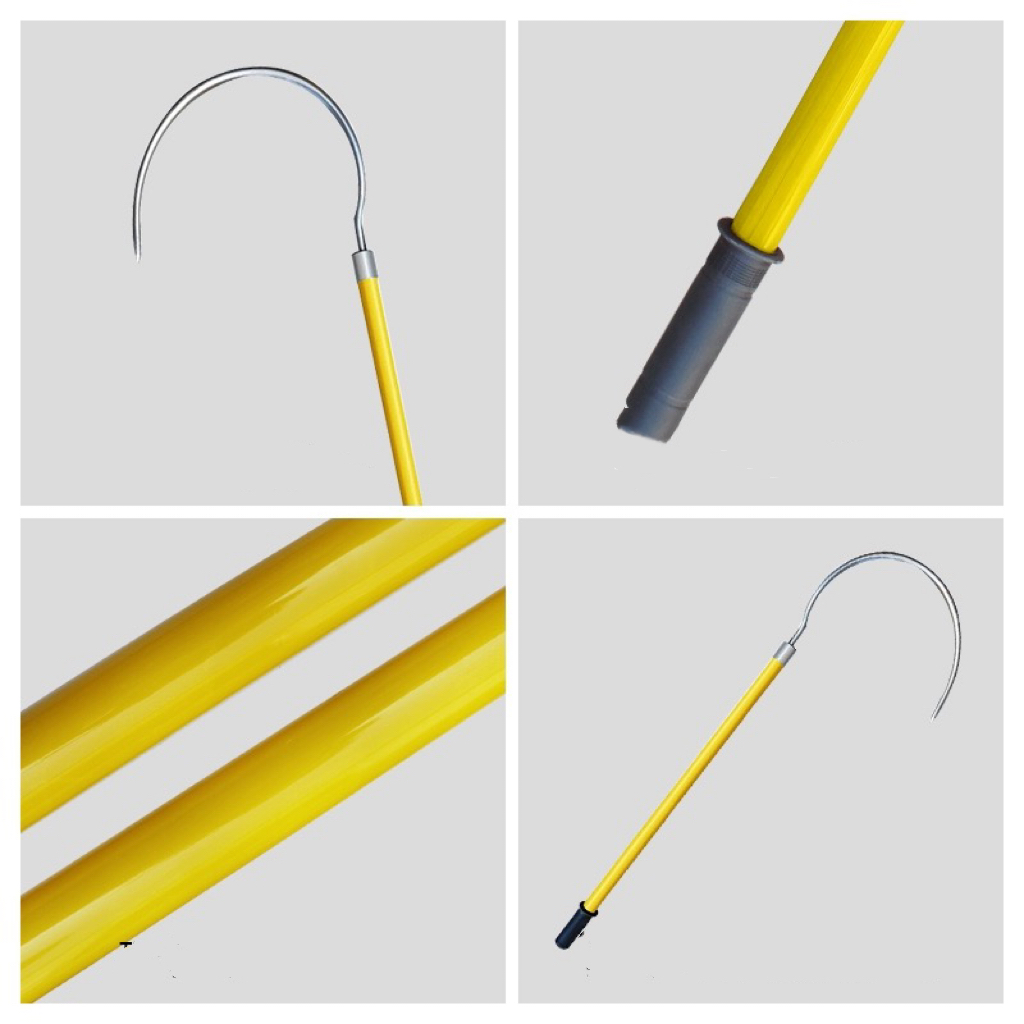
Electricians and linemen often work under conditions where safety is paramount. One of the essential tools they rely on is the insulated rod, which provides protection from electrical shocks while performing various tasks, especially in high-voltage scenarios. Ensuring the correct use of an insulated rod is critical to maintaining personal safety and operational efficiency.
To answer the question, "How to use an insulated rod?" the key lies in understanding its usage instructions, safety guidelines, and maintenance practices to ensure both effectiveness and safety. This article will explore these topics in detail.
Understanding the Insulated Rod
An insulated rod, also known as a "hot stick," is a long, non-conductive pole usually made from materials like fiberglass and epoxies. These rods are designed to allow professionals to handle live electrical wires and equipment safely, without direct contact, reducing the risk of electrical shock.
Firstly, familiarize yourself with the rod's components. Typically, an insulated rod consists of three parts: the main body, often segmented for varying lengths; a hook or clamp attachment for manipulating wires or equipment; and interchangeable heads for specific tasks, such as pulling fuses or resetting switches.
When and Why to Use an Insulated Rod
The primary purpose of an insulated rod is to provide a safe working distance from energized parts. This becomes particularly essential during high-voltage maintenance, where direct contact risks serious injury or death. Examples of uses include opening circuit breakers, removing pole covers, or attaching grounding clamps without energizing the person performing these tasks.
Before use, always ensure that the rod is rated for the voltage level you'll be working with. Typically, the rod's rating, which could be in terms of kV (kilovolts), is clearly marked on its body. Consult the manufacturer’s manual to confirm that your rod meets or exceeds the safety requirements for your particular application.
Pre-Use Inspection: A Critical Step
Inspecting an insulated rod before each use is non-negotiable. Begin by visually checking for any cracks, moisture, contamination, or mechanical damage. Any defect, however minor it may seem, could compromise the rod’s insulation properties, creating a hazardous situation.
Next, ensure all attachments and heads are securely fastened. Test the rod for flexibility and length compliance. If the rod is telescopic, extend and retract it fully to check for smooth operation, while looking out for any signs of damage or wear.
Some companies may also employ electrical testing devices to physically verify the insulation integrity. This usually involves subjecting the rod to a high-voltage test and measuring the electrical leakage to ensure it remains within safe limits.
Proper Handling Techniques
Handling an insulated rod requires correct positioning and posture to maximize its effectiveness and your safety. Always hold the rod at the designated gripping points, which are typically marked by colored bands. These bands indicate the maximum allowable hand-positioning distance.
When manipulating high-tension wires or equipment, maintain a stable stance and close grip to the body to prevent any sudden movements. The idea is to let the rod handle the work while you control it steadily. Keep your movements slow and deliberate to avoid jerky actions that might bring the rod into contact with unintended areas.
Maintain constant focus and awareness of surroundings. Always be mindful of where the rod is in relation to not only yourself but also other equipment and personnel. This awareness helps in avoiding unintended contacts that could lead to accidental faults or injuries.
Maintenance and Storage
Maintenance of an insulated rod is as important as its correct usage. After each use, clean the rod with a recommended cleaning agent, usually a mild detergent, and a non-abrasive cloth. This helps in removing any contaminants, such as grease or dirt, which could degrade the rod’s insulating properties.
Regularly schedule professional inspections, adhering to the guidelines set forth by the rod's manufacturer. These inspections might involve dielectric testing to ensure the rod retains its insulative qualities over time.
Proper storage practices contribute significantly to the rod’s lifespan. Store them in a dry, temperature-controlled environment, away from direct sunlight and chemicals. Utilize appropriate storage racks that support the rods at multiple points to prevent warping.
Conclusion
Using an insulated rod effectively is crucial for anyone working in environments involving high voltage. It acts as an essential barrier between you and live electrical components, significantly reducing the danger of electrical shock. By understanding its components, conducting thorough pre-use inspections, handling it appropriately, and adhering to stringent maintenance and storage practices, you can ensure both your safety and the insulated rod’s operational efficiency.
In conclusion, the proper usage of an insulated rod revolves around a clear understanding of the tool, diligent safety checks, correct handling techniques, and consistent maintenance and storage routines. Adhering strictly to these principles maintains high safety standards and enhances operational effectiveness.
FAQ
What should I do if I find a crack in my insulated rod?
Immediately replace the rod or have it professionally inspected. A cracked rod cannot provide adequate insulation and poses a severe safety risk.
How often should I test my insulated rod?
Follow the manufacturer's guidelines; typically, rods are tested every six months to a year, or sooner if they are used regularly in demanding environments.
Can I use an insulated rod in rainy or moist conditions?
It is generally advised to avoid using insulated rods in wet conditions because moisture can severely compromise insulation properties. Always refer to the manufacturer's safety recommendations.



















